The Traction Avant was produced from 1934-1957. It was a technical revolution and a milestone in automotive history. The Traction Avant wasn’t the first car with revolutionary front-wheel-drive — Adler, Alvis, Cord, DKW, Stoewer and Tracta had already launched front-wheel-drive cars. And neither was it the first to feature a monocoque body — Lancia, with the Lambda, preceded it, but the Traction Avant was the first car that combined front-wheel-drive with monocoque construction, along with independent suspension on all four corners and hydraulic brakes, making the Traction Avant the most modern car, by far, when it was launched in 1934. Designed by André Lefèbvre and Flaminio Bertoni, the Traction Avant was the first automobile design created by sculpting from clay.
It’s novel design gave it a very low-slung and rakish appearance relative to its contemporaries as well as balanced weight distribution, which was primarily achieved by the significantly lower centre of gravity, the wide track, the long wheelbase and the installation of the transmission in front of the engine and front axle. The Traction Avant was also the first production car to incorporate torsion bar suspension, hydraulic brakes and rack and pinion steering (which was installed for the first time in 1936).
The Traction Avant was also known for its excellent road holding and comfort. The floating engine reduced the transmission of vibrations to the vehicle interior. The rigid rear axle, which was guided by two trailing arms with torsion bar springs, also made a significant contribution to driving comfort.
The front windshield of the Traction Avant could be easily opened at the bottom to ventilate the interior in warmer outside temperatures. In winter, a blind could be mounted in front of the radiator grille to allow the engine to reach its operating temperature more quickly.
The “floating” four-cylinder engine had overhead valves operated by centrifugally cast rocker arms and wet, removable and thus maintenance-friendly cylinder liners. The 32 hp engine with a displacement of 1,303 cm3 was equipped with a three-speed gearbox and had a consumption of 9 l/100 km. The maximum speed was 95 km/h.
The original model, which was presented on 18 April 1934, was a small sedan with a 1,303 cc (79.5 cu in) 4-cylinder engine. This model was called the 7A. It was succeeded in June 1934 by the 7B with a higher-power engine of 1,529 cc (93.3 cu in). The 7B in turn, was succeeded in October 1934 by the 7C with an even higher-output 1,628 cc (99.3 cu in) engine. Later models were the 11 (launched in November 1934), which had a 1,911 cc (116.6 cu in) four-cylinder engine, and the 15 (launched in 1938), with a 2,867 cc (175.0 cu in) six. The numbers refer to the French fiscal horsepower rating, or CV. The 11 was an 11 CV, but curiously the 15 was actually 16 CV. The 11 was built in two versions, the 11L (“légère”, or “light”), which was the same size as the 7 CV, and the normal model 11, which had a longer wheelbase and wider track.
Although many models were produced, 2 door convertibles and coupés up until WWII, and long wheelbase sedans that offered 3 row seating or had an opening rear section for cargo loading, the primary Traction models after the second world war were the 11B (normal size) the 11BL (“légère”), both powered by a 1911 cc engine, both the Perfo engine (until1955) and the 11D engine (1955-1957), and the 15/6 that used to 11B body and had an extended front end to accommodate the larger 2867 cc 6-cylinder engine. The stretched versions of the 11B and the 15/6 were called the Familiale and the opening rear version the Commerciale.
From 1954 to 1957, 6-cylinder Tractions were produced as the 15-Six H model with a hydropneumatically sprung rear axle, the predecessor of the legendary suspension used in the DS.
Right-hand drive Tractions that were built in Slough, England were named differently. The normal size model was called the “Big-Fifteen”. The smaller model was the “Light-Fifteen” and the 6 cylinder model was called the “Big Six”. Their primary differences from Paris or Belgium built Tractions (aside from RHD) were that they had leather seats, a wooden dash, more rounded bumpers and 12-volt electrics rather than 6-volt.
Though some 760,000 Traction Avants were produced between 1934 and 1957, the total number of the 6-cylinder cars made was, in comparison, a relatively modest 47,442.
A V8 engine version of the Traction Avant, the CV22, was initially introduced when the car was first launched in 1934. Although convertible, coupé, sedan and stretched versions were shown, they were never put into production and none are known to survive today.
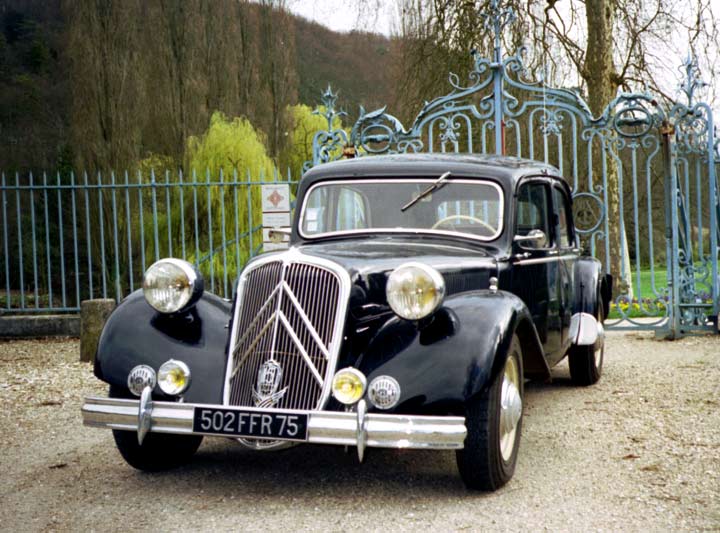

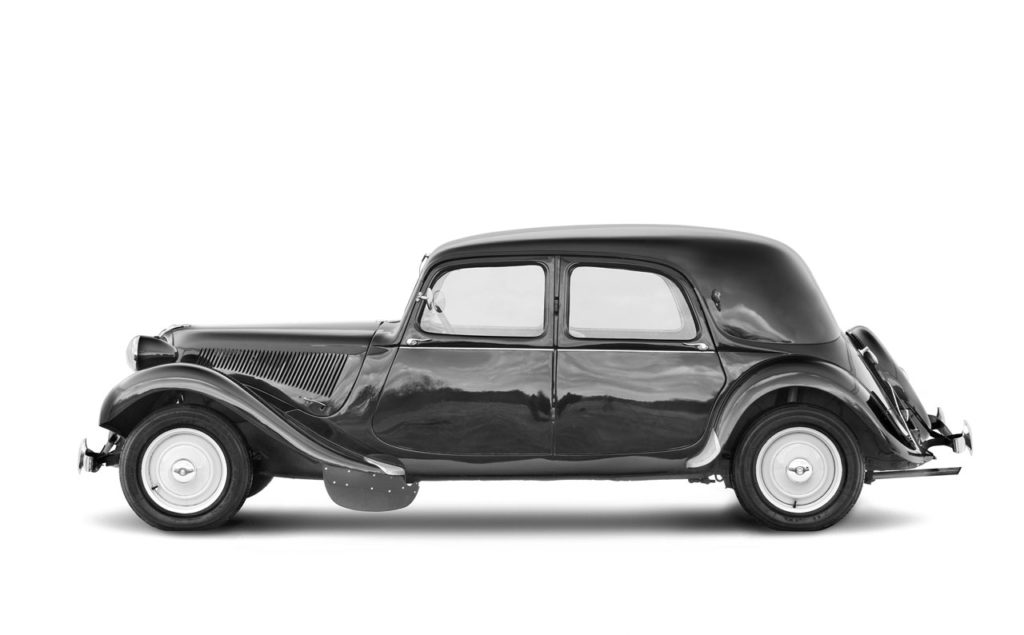
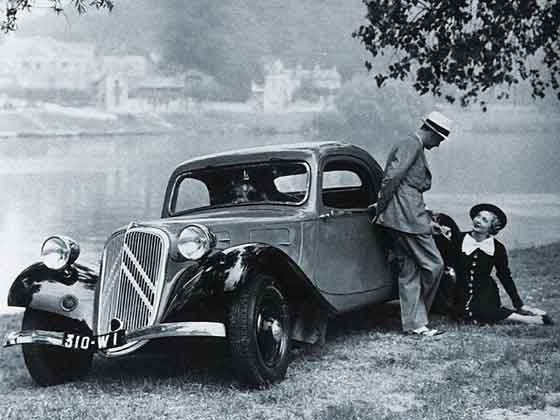
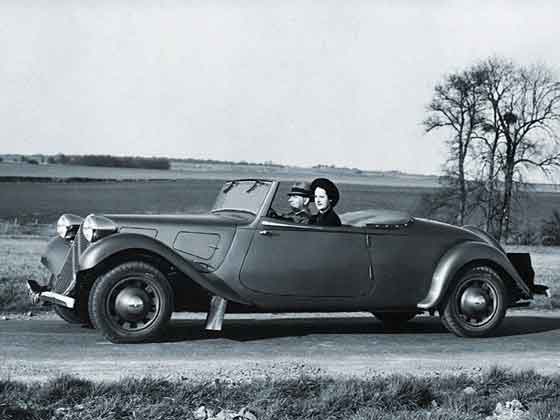
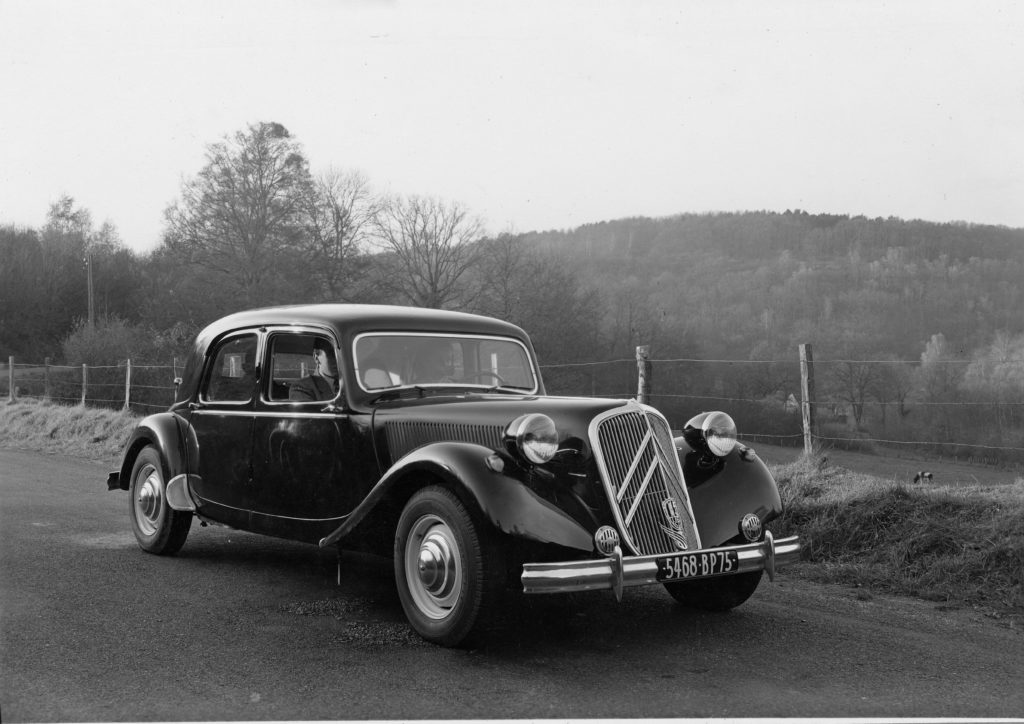
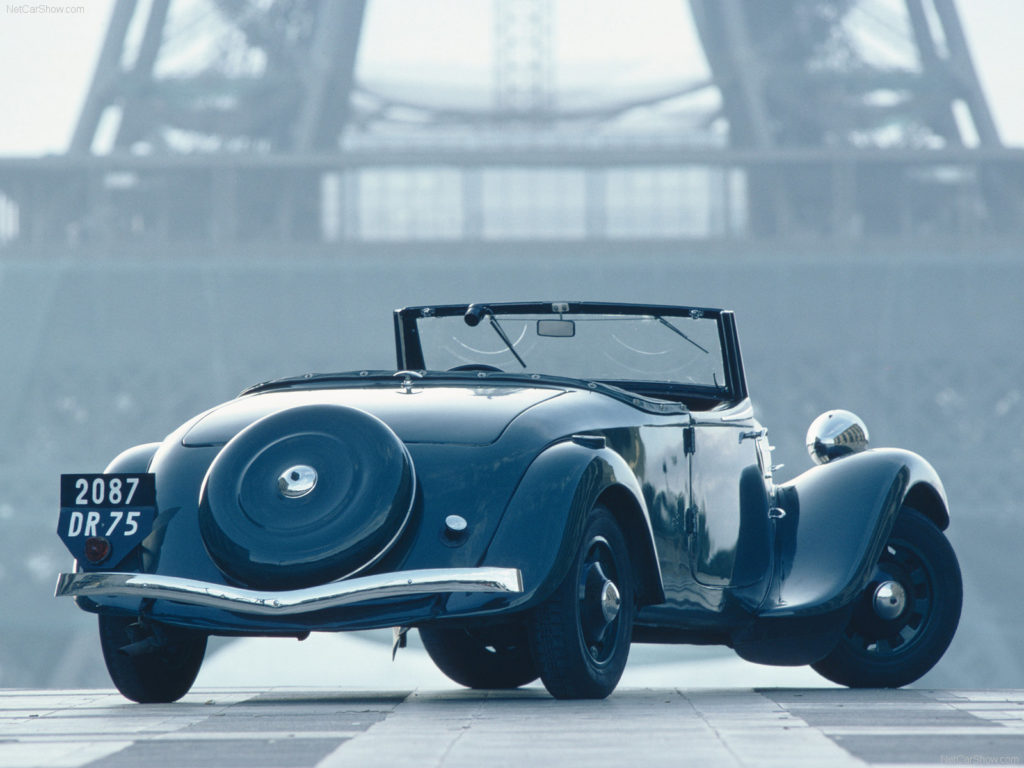


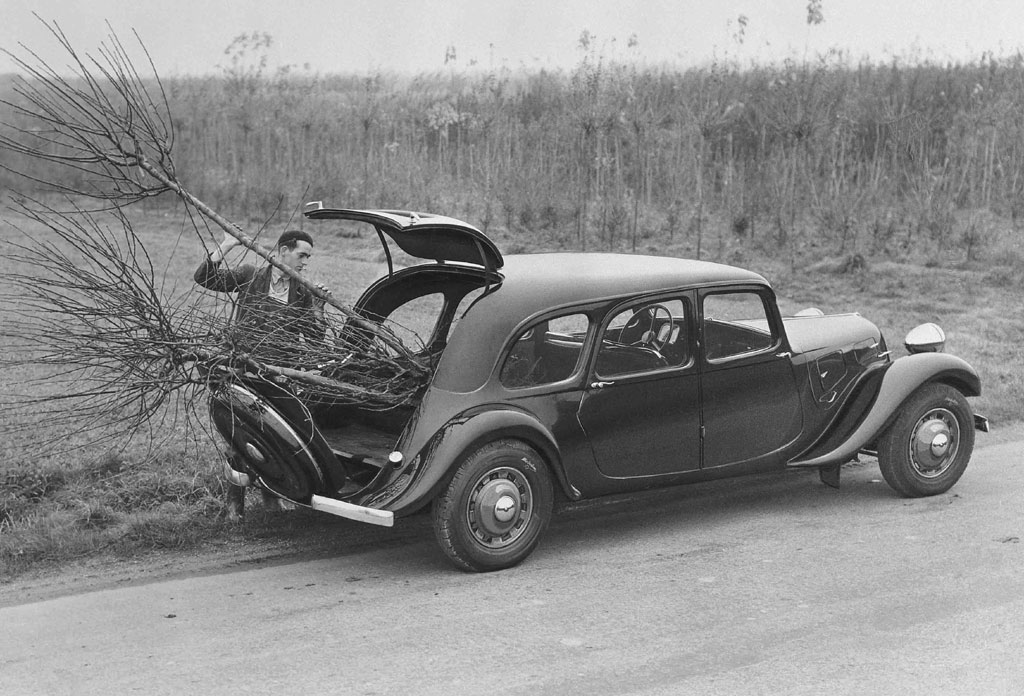
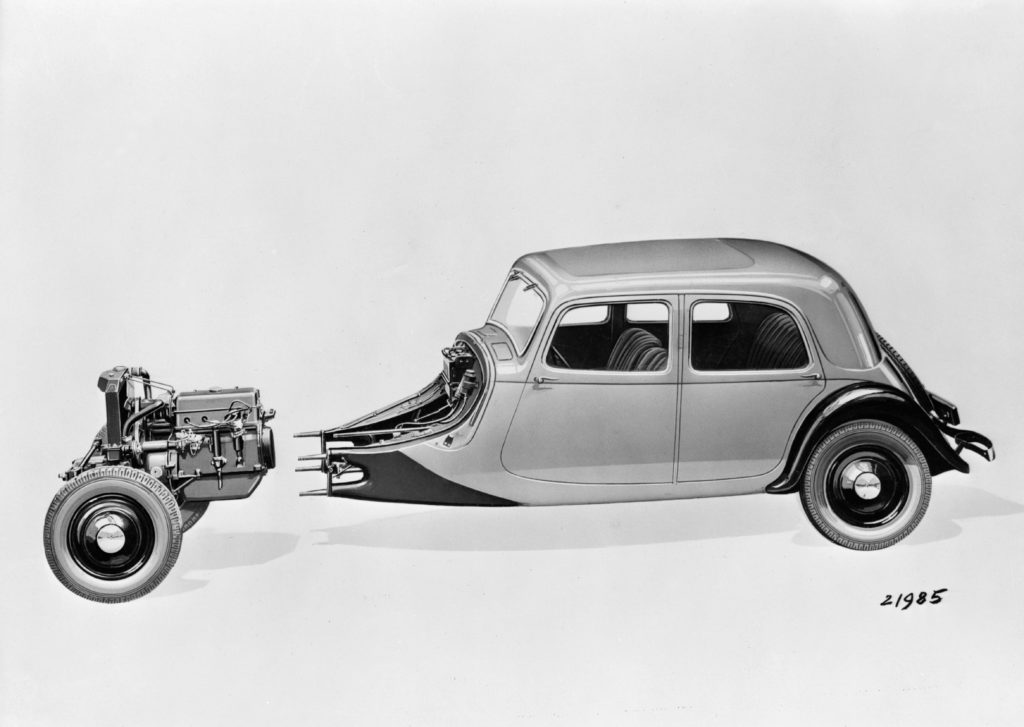


Hi all, can anyone advise me as to adjust camber on 1949 avant light 15? Thank you, Bill Angerami
Camber is not adjustable. There is a sequence in which adjustments of the front end should be made:
1. Set heights under the hull, by adjusting torsion bars
2. Set weights on each wheel, by adjusting the torsion bars. (This could change the heights).
3. Adjust caster angle
4. Adjust toe out
5. Adjust steering lock
6. Check wheel camber (which is not adjustable)
Flaminio Bertoni designed the bodywork of the Traction. André Lefèbvre was in charge of the engineering.